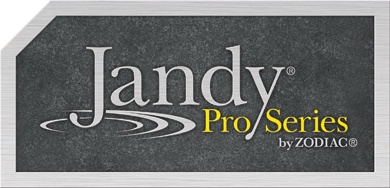Retaining walls can be as decorative as they are useful. They can turn an inconveniently steep slope into a beautifully terraced yard, ready for attractive landscaping.
What is a Retaining Wall?
A retaining wall has an important job. In many cases, it’s there to keep parts of your sloping property from sliding away or tumbling down. These hard-working walls retain soil and control erosion. Serious stuff.
Does that mean they need to look industrial and utilitarian? Not a bit. There are several retaining wall materials to choose from, and the choices have come a long way since the days when your grandfather constructed a retaining wall on the farm.
Sure, they have a structural job to do, but a creatively constructed retaining wall can also create additional seating or offer a pretty spot for plants and grasses. It can even be the beginning of an outdoor room.
Choosing the Best Retaining Wall Material
Take a look at the materials that make up your house and the areas around it. That can help guide you to a material that matches or complements your home.
What type of wall is it? While purely decorative walls can be built with almost any type of material, retaining walls with a big structural load need a durable, long-lasting material that’s reinforced for strength.
The Top 4 Retaining Wall Materials
Here’s a look at four of the best retaining wall materials, as well as a bit about their pros and cons:
Segmental Retaining Wall Blocks
Segmental retaining wall blocks are becoming one of the most popular choices for retaining walls. Made of durable concrete, they’re dry stacked and interlocked with pins, with no need for mortar.
These block systems come in a wide variety of colors, shapes, textures and sizes. You can find one that blends well with the exterior of your home and your property.
The blocks assemble pretty easily. You stack the blocks on top of one another on top of a compacted gravel base. Then you secure them with pins, clips or interlocking edges. They can be constructed in curved or sculptural designs.
When they’re stabilized with geogrid soil reinforcement — flexible, synthetic meshes manufactured for slope stabilization and earth retention — they can be built as high as needed.
One thing to note: Walls more than four feet high need to be designed by a structural engineer.
Natural Stone
This is the material that started it all. When man built his very first wall, it was out of natural stone. Traditional stone retaining walls are lovely, and have a natural look. They can be used in curved, as well as straight designs.
The down side: They can be the most expensive option. Natural stone walls are labor intensive, requiring more skill and more time to build.
But there are ways to bring down the price. One is to construct the retaining wall out of concrete, then face it with natural stone veneer. The look is stone, but the cost is less, because there’s less labor involved to build it.
Another option is to build a boulder embankment and intersperse plantings among the boulders. Because there’s no mortar and less labor, it’s less expensive than other options. The vegetation helps anchor the boulders into the side of your embankment. You do need more space for this, because the sloping nature takes up more room than a more vertical wall. But the effect is natural and beautiful.
One drawback to natural stone: Over time, the stones can shift, and the mortar can crack.
Concrete
If you have a contemporary home, you might consider a solid concrete retaining wall. These offer a sleek, clean line that complements modern home designs.
These walls are very strong — most concrete poured today is engineered to last for more than 50 years. Concrete retaining walls use footings, so they can be built high when needed to contain a steep slope. (Quick construction lesson: Footings are an important part of foundation construction. They’re typically made of concrete with rebar reinforcement that has been poured into an excavated trench. The purpose of footings is to support the foundation and prevent settling.)
Think beyond gray. You can pour a colored concrete retaining wall, stain a retaining wall after it’s cured, pour the concrete into a patterned form or apply a stamped design. Lots of possibilities.
Seal it, and you have an easy-care surface that rinses free of dirt. Concrete retaining walls can crack over time. And keep in mind, this type of wall has a contemporary feel, so it wouldn’t be an ideal choice for a home with a traditional design.
Brick
Remember the tale of the Three Little Pigs? The pig with the brick house fared the best against the Big Bad Wolf. Brick is strong and durable. Like natural stone, it’s been used to construct walls for centuries.
Brick walls can last for decades without much maintenance. They can complement traditional or contemporary home designs. Installing brick is more labor intensive than some other materials, so it’s not as cost effective.
Neave Knows Building Retaining Walls
With more than 40 years of experience in the field, Neave Masonry is your home for the best in custom-built retaining walls.
Every project we develop is designed to extend the usability of your outdoor space, improve the visual aesthetic of your home and increase the overall value of your property.
One of the benefits of working with Neave Group Outdoor Solutions is that you’ll also have access to our sister divisions. A retaining wall project might also include excavation, landscape restoration or lawn care.
Your single point of contact at Neave will be able to schedule and coordinate any services you need when considering the entire scope of your renovation or new building project.
If you’re in the Hudson Valley, call us at (845) 463-0592. If you’re in Westchester County, call (914) 271-7996; from Connecticut, dial (203) 212-4800. Or, fill out our simple web form, and we’ll contact you about setting up your free consultation.























